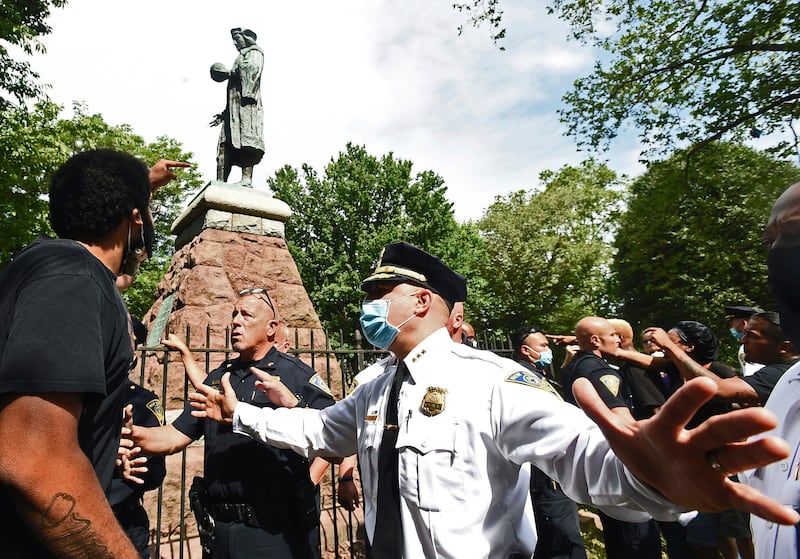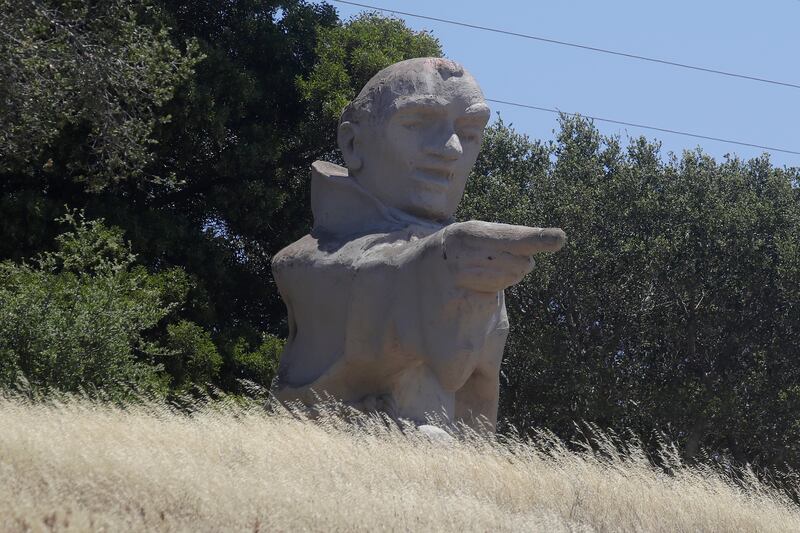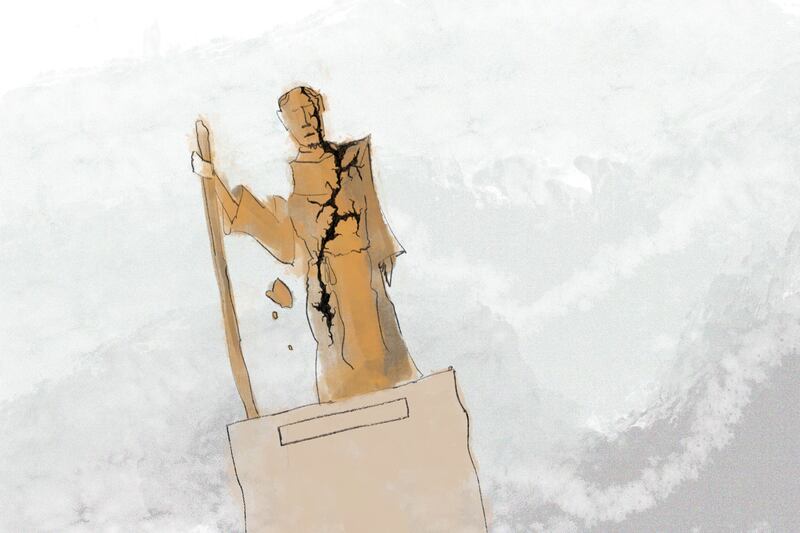SALT LAKE CITY — Mark Tooley grew up in northern Virginia, surrounded by reminders of America’s messy, inspiring and often misunderstood past.
For him, the historic statues and battlefields were like an extra set of teachers. They sparked conversations about his community, his country and his Christian faith.
“They shaped how I developed religiously and politically,” said Tooley, who serves as the president of the Institute on Religion and Democracy in Washington, D.C.
Because of his experiences, Tooley has been frustrated by recent attacks on monuments honoring a variety of historic leaders, from founding fathers to Catholic saints. It feels like people are so obsessed with calling out misdeeds that they ignore the lessons admittedly imperfect figures have to teach, he said.
“I’m really distressed when people want to stamp out large parts of the past or dismiss it or demonize it as though we represent the apex of human accomplishment. That’s a dangerous attitude,” Tooley said.

It’s also an unchristian attitude, he argued, highlighting biblical teachings about the nature of human beings. God has always been willing to partner with sinful people, so we shouldn’t act as if only the purest leaders deserve to be honored and praised.
“Once you begin to erase parts of history, you’re leaving out part of God’s story,” Tooley said.
Other faith leaders and scholars believe there’s a difference between tearing down statues and erasing the past. In some cases, monuments derail, rather than inspire, efforts to understand history’s complexities, said Jemar Tisby, a Christian historian and writer.
“You can learn a lot more from books and documentaries than from engravings on monuments,” he said.
What Americans, including Christians, need are more opportunities to learn, not more statues to visit, Tisby added.
“We’ve done a terrible job in the U.S. and in the church of rightly remembering the people who came before us,” he said.
Flawed education
Incomplete history lessons help explain why attacks on statues are often met with anger and disdain, said Tisby, who is the author of “The Color of Compromise: The Truth about the American Church’s Complicity in Racism.” People are used to hearing about historic leaders’ good qualities, but they’re often caught off guard by meaningful critiques.
“We’ve mythologized many historic figures,” including past religious leaders, he said.
This approach to the past created problems long before this summer’s protests over racial inequality, Tisby said. In his own life, it’s meant that his attempts to deepen understanding of Christians like the Rev. Martin Luther King Jr., or the Rev. Billy Graham often spark outrage rather than interest in learning more.
“When you first get exposed to new information about someone you respect, your reflex is to defend them,” he said. “If you have a better historical education, then it’s less of a shock.”
Tisby is far from the only religion scholar or faith leader calling for better education right now. Even those who are more critical of recent statue-related activism agree that the country would benefit from a fuller understanding of the past.
“The best way to reckon with controversial aspects of legacies of religious leaders, indeed of any public figures, is by studying accurate histories of their lives and the times in which they lived,” said the Rev. James Martin, a Jesuit priest who serves as editor at large for America magazine, in an email.
Where education leads
However, religious leaders disagree on where education should lead.
Tisby would support the formation of community groups to discuss potential changes to controversial statues. Although attacks on monuments honoring people like Columbus or Brigham Young often make the national news, it should be up to local groups to decide their fate, he said.
“When you bring a group of people together to discuss what is healthy for their particular community and pay attention to their distinctive needs, you come closer to something the entire community can celebrate,” Tisby said.
Tooley, on the other hand, feels like removing statues is almost always the wrong thing to do. He wants the flaws of past leaders to inspire introspection, not construction projects.
“We can make judgments about them, but it’s more important to make judgments about ourselves and our own time. We can improve our own situation now by learning from people in the past,” he said.

Michael Sean Winters, who writes for National Catholic Reporter, offered similar thoughts in a recent column on Saint Junipero Serra. Father Serra, who is famous for establishing Catholic missions in California in the late 18th century and honored with dozens of statues, street signs and building names, faces criticism today for contributing to the subjugation of Native Americans.
“Serra evangelized in ways we would never think to do today, but if we had lived when he did, we are fooling ourselves if we think we would have evangelized in ways markedly different from those he employed,” Winters wrote.
Efforts to expose past leaders’ issues must acknowledge that we, too, make plenty of mistakes, he said.
“We should all contemplate this humbling fact: None of us knows what things we do now will, 200 or 300 years hence, be viewed as barbaric or inhumane,” Winters wrote.
Learning from flaws
Too often, those vandalizing statues and calling for changes to monuments fail to grasp what they have in common with people from the past, Tooley said.
Statue-related activism “tends to come from a very sanctimonious and self-righteous place. It assumes that some of us in our current time and place are morally and spiritually superior to nearly everyone who has gone before us,” he said.
In reality, all humans are imperfect and must rely on God for guidance and grace, Tooley said.
“From a theological perspective, people thousands of years ago were no better or worse than we are,” he said.
Tisby agreed that religious and political leaders in the past were morally complex, just like we are. However, that doesn’t change the fact that some never deserved to be publicly honored, he said.
“To act as if we, in the present day, are the first ones who recognize how problematic some of these individuals are is insulting to the people who came before us,” he said.
Still, even deeply flawed people can have lessons to teach us, the Rev. Martin said.
“It’s important for us to identify behavior ... that we now see as clearly sinful. That’s part of how we grow as a society and as a church,” he said.


 alt=Kelsey Dallas
alt=Kelsey Dallas